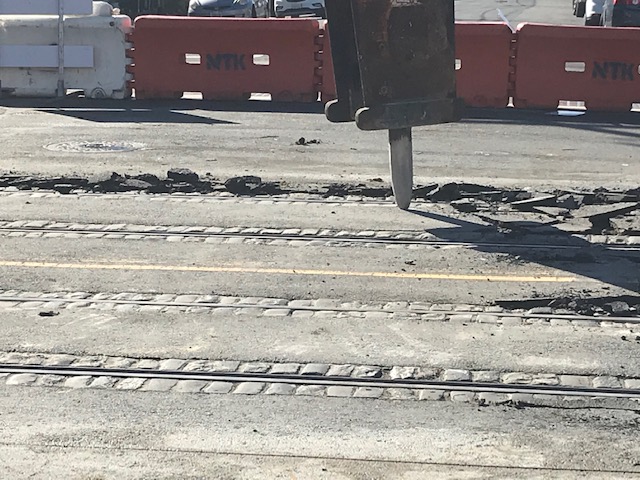
When street railway companies laid tracks in San Francisco streets, they were responsible for maintaining the area around the tracks. That’s part of the reason it was customary to lay a row of basalt pieces right next to the outer rails. The dense, heavy, gray stone is correctly called Belgian block or sett though often mistakenly called cobblestone. (Cobbles are more egg shaped.)
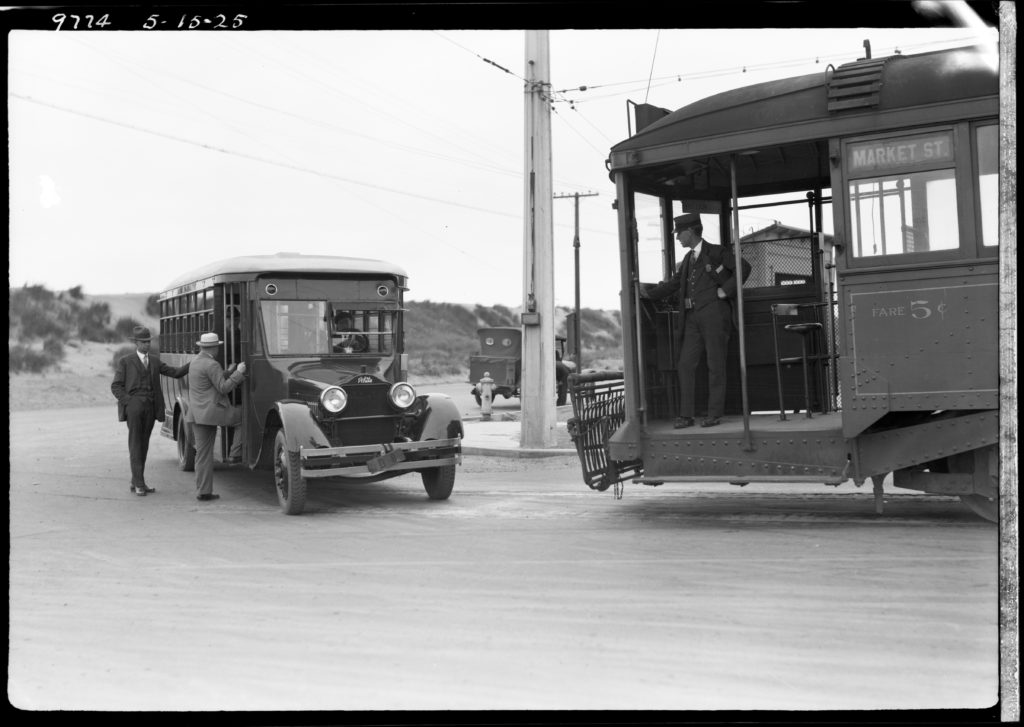
The Belgian block provides a buffer between the rails and the street paving. When streets are paved in asphalt right up to the track, even slight movements of the tracks over time can cause the asphalt to crack or bulge. Hot or freezing weather can exacerbate this tendency. Also, since street railways almost always were responsible for maintaining the street not only between the tracks, but outward for a fixed difference, the Belgian blocks can reduce maintenance.
In its early years, Muni always lined its tracks with Belgian block when installing new rails. Over the decades, as worn rails were replaced, the Belgian blocks disappeared, just as they did from the surface of many entire streets when they were repaved.
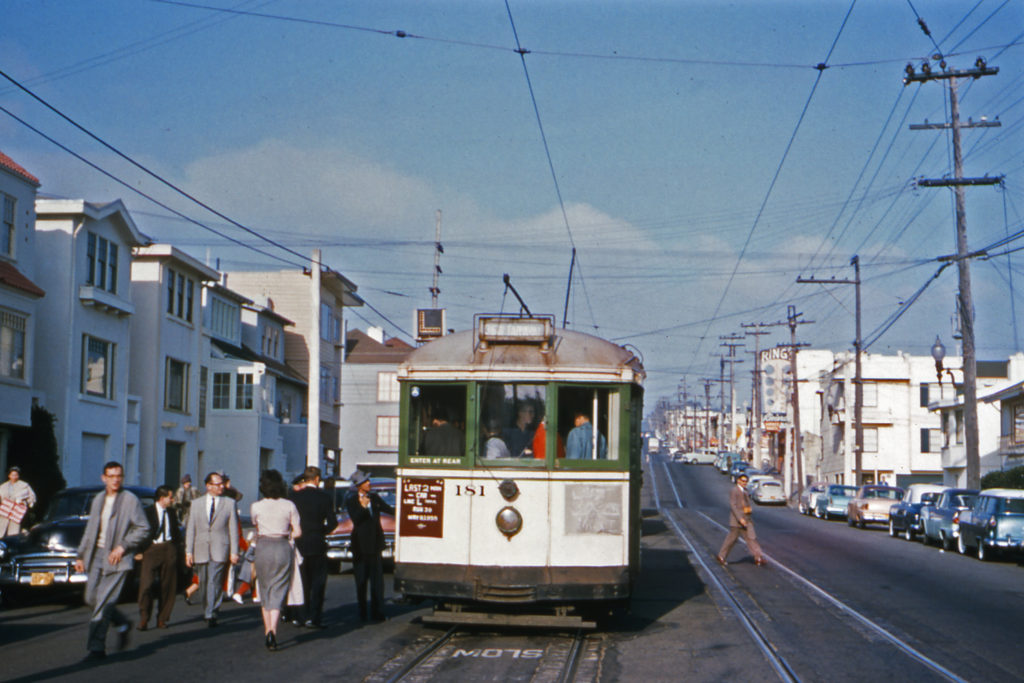
The last surviving stretch of Belgian block-lined streetcar track in San Francisco just disappeared. This was the two westernmost blocks of Taraval Street in the Sunset District, where tracks for the L-Taraval line were installed in 1923. These two blocks of track left regular service in 1937, when an extension opened south on 46th Avenue to reach the zoo. The spur track was then used only for emergencies, such as temporary storage of disabled equipment.
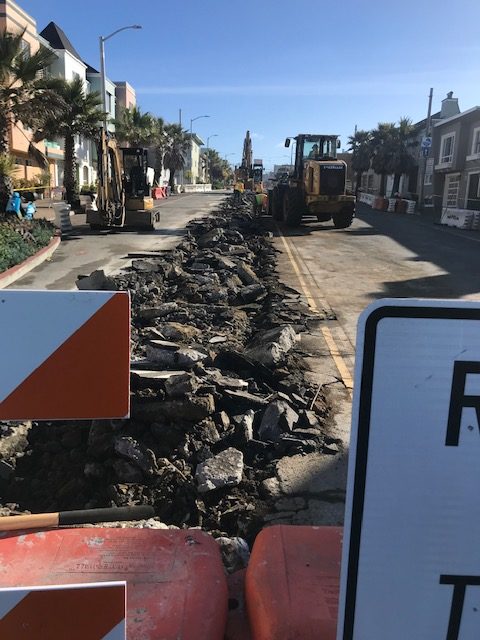
In 2003, when Muni rebuilt the Zoo loop (whose original track had lasted 66 years!), they started digging west from 46th, ripping out Belgian block and old track. The historic spur wasn’t supposed to be part of the zoo loop project, so we checked with the project manager, who told us the old rail on the spur was too rusty to weld to, so they were going to rip it out until they found good rail to weld to. We suggested since it was rarely used, good old-fashioned bolting and bonding might work instead, and the project manager, Fariba Mahmoudi, agreed, saving the historic track (and money).
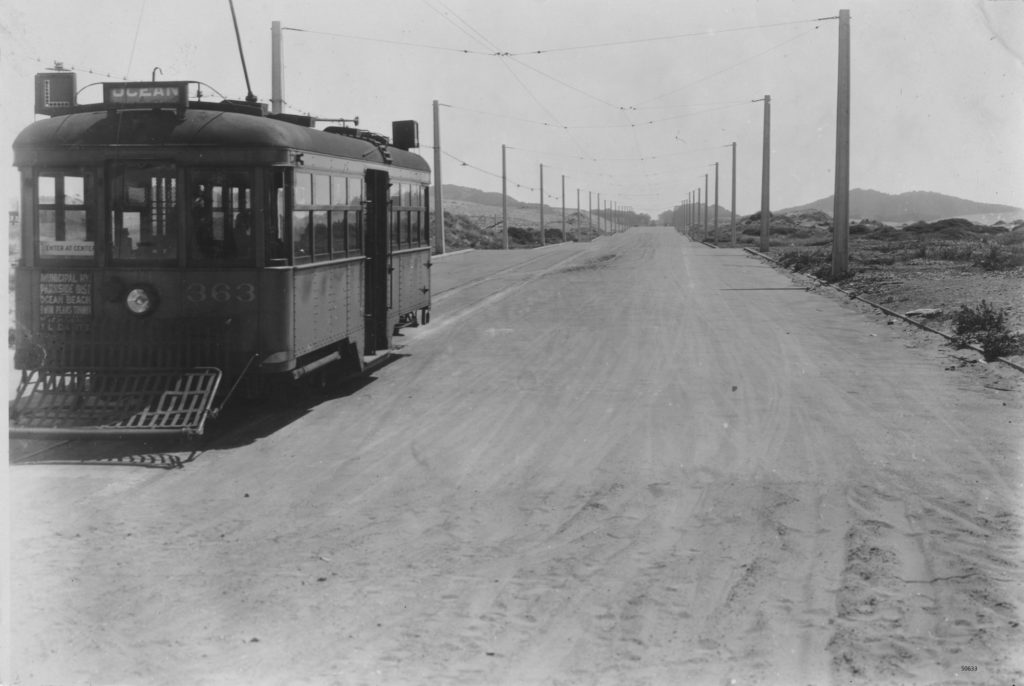
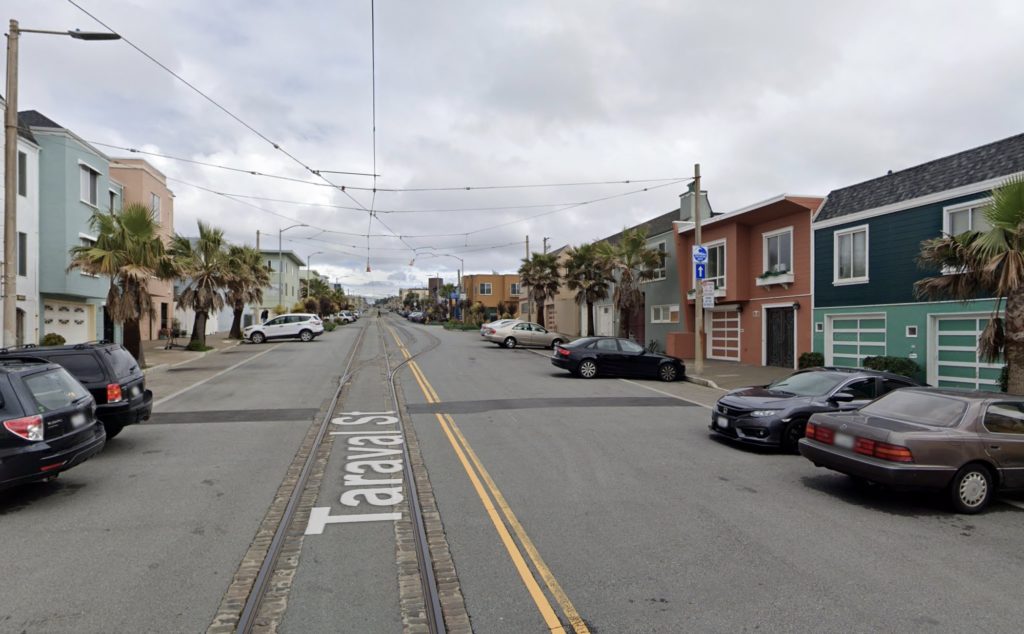
But all of the Sunset’s streets are laid on sand, and the sand under the spur track later was judged to be insufficient to continue supporting modern LRVs, so the end of track was “red-tagged” — no more streetcars. Now, as part of the replacement of all the tracks on Taraval west of Sunset Boulevard, the spur tracks, more rust than rail after being in the salt air for 98 years, have finally given up the ghost. Yet even while the rails themselves finally deteriorated, the Belgian blocks remained set and solid 98 years after their installation.
The tracks are being replaced right now, but — good news — the crew is saving all the Belgian block and will lay it back down next to the new rail, to preserve the historic look of the rails.
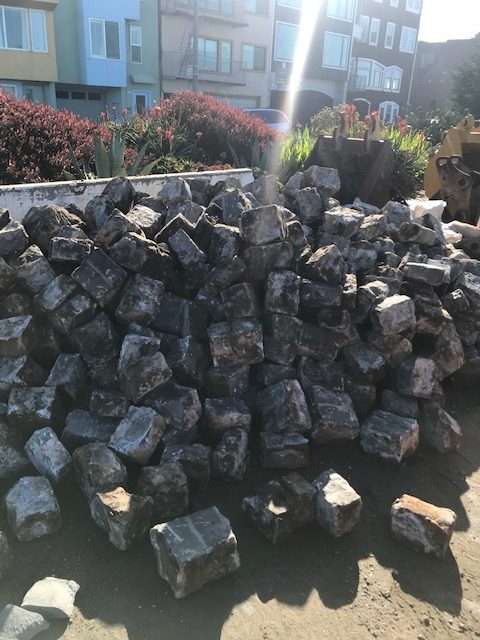
Thanks to the SFMTA team for preserving the look of this historic stretch of Taraval track. We hope when full Muni service resumes we can inaugurate the new rail with a charter of Muni Car 1.
If you appreciate the things we do to preserve historic transit in San Francisco, please consider supporting us with a donation or membership. Thanks.